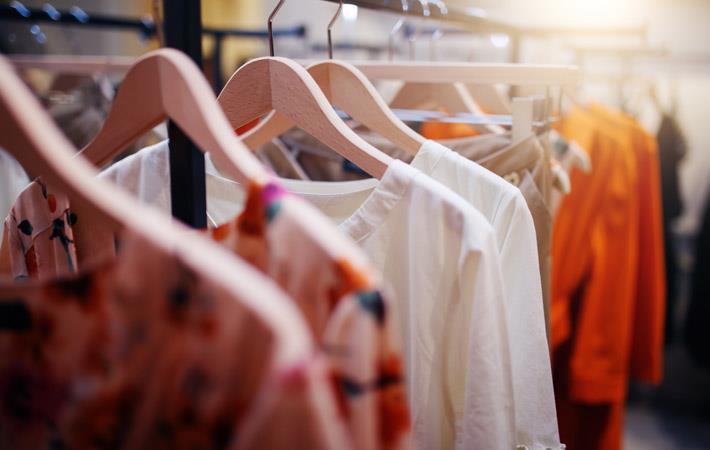Interviews
Reduce fuel consumption: Smart Myanmar to garment sector
19 Jul '18
4 min read

Smart Myanmar, a project funded by the European Union (EU), has advised garment factories in Myanmar to reduce consumption of fuel, regardless of the source. It said that it is necessary to invest in steam condensate recovery, a system that actually saves the company money in the medium term, however, companies are hesitant about initial investment.
“It is also practical and necessary to make certain the steam system is effectively designed and does not suffer from any broken steam traps or separators. Among ten newly built factories surveyed in 2017 a majority had mistakes in the design and set-up of their steam systems, most resulting in substantial waste of steam,” said Smart Myanmar on its website.
Smart Myanmar has also recommended factories to consider options for solar thermal assist. Solar thermal assist can be as simple as having black water tanks and a network of black water pipes exposed to the sun which are thereafter piped into the feed water tank for the boiler. The thermal gain in a tropical climate saves energy by reducing the amount of fuel needed to heat the water.
The third recommendation is to consider various biomass options. There are several potential options, but risk husks are very common in Myanmar due to the large rice growing industry of the delta region. Compressed rice husk pellets are a viable fuel option for boilers. Many wood-fired boilers are able to handle risk husk pellets without any need for conversion of technology. Some types of biomass, though, require specialised equipment.
The EU-funded project’s fourth recommendation for boiler fuel and emissions is to consider fabric scrap boilers. Special care should be exercised to make sure plastics are not being burned, but generally some boiler technology is specifically designed to safely burn fabric scraps (special flue gas treatment equipment is essential).
The project has also recommended multiple ways to address over-extraction and pollution of water. It said factories should outline water reduction priorities in the company’s environmental management policy. Factories must meter their water usage and, hence, measure it. Meters should be used to determine overall usage, but also for water intensive processes, such as with washing and dyeing machines. Based on such measurements, key performance indicators can be set and improvements can be targeted over time via new processes and technologies.
Regular facility checks should be made by maintenance staff to check for and fix leaks. Flow aerators and restrictors should be in place in toilet areas so that less water is used. Factories should also take care not to set-up new wet processing facilities in dry zone areas. If production is set-up in such areas, the factory should be ready to invest in expensive closed loop technologies such as zero liquid discharge.
The key considerations for water pollution reduction include wastewater treatment. All process wastewater must be effectively treated to safe levels. This can be done via biological or chemical processes, but a suitable treatment system must be in place. Although regulatory enforcement in this area was inadequate in years past, the Myanmar government is beginning a stricter enforcement process and factories violating Myanmar’s emissions guidelines and requirements for effluent treatment are likely to face large fines and possible forced shutdown.
Even with an effective treatment system, factories ought to have a contingency plan in place in case the system temporarily breaks. This can be via an auxiliary treatment system, a holding tank, production stoppage or other means. Hazardous liquid waste, such as pad printing waste, must be given over to a third party disposal company. A reasonable plan should also be in place for ETP sludge management, said Smart Myanmar.
The project has also instructed companies to store hazardous waste in a locked area and dispose it via a qualified service provider. It even suggests using automated cutting machines to improve cutting efficiency and reduce cut fabric wastage.
Smart Myanmar said that exploring and adopting many of the above recommendations benefits the local environment, reducing greenhouse gas emissions and ultimately also benefits factories by reducing costs and often helps additionally by boosting their Higg Index scores. (KD)
“It is also practical and necessary to make certain the steam system is effectively designed and does not suffer from any broken steam traps or separators. Among ten newly built factories surveyed in 2017 a majority had mistakes in the design and set-up of their steam systems, most resulting in substantial waste of steam,” said Smart Myanmar on its website.
Smart Myanmar has also recommended factories to consider options for solar thermal assist. Solar thermal assist can be as simple as having black water tanks and a network of black water pipes exposed to the sun which are thereafter piped into the feed water tank for the boiler. The thermal gain in a tropical climate saves energy by reducing the amount of fuel needed to heat the water.
The third recommendation is to consider various biomass options. There are several potential options, but risk husks are very common in Myanmar due to the large rice growing industry of the delta region. Compressed rice husk pellets are a viable fuel option for boilers. Many wood-fired boilers are able to handle risk husk pellets without any need for conversion of technology. Some types of biomass, though, require specialised equipment.
The EU-funded project’s fourth recommendation for boiler fuel and emissions is to consider fabric scrap boilers. Special care should be exercised to make sure plastics are not being burned, but generally some boiler technology is specifically designed to safely burn fabric scraps (special flue gas treatment equipment is essential).
The project has also recommended multiple ways to address over-extraction and pollution of water. It said factories should outline water reduction priorities in the company’s environmental management policy. Factories must meter their water usage and, hence, measure it. Meters should be used to determine overall usage, but also for water intensive processes, such as with washing and dyeing machines. Based on such measurements, key performance indicators can be set and improvements can be targeted over time via new processes and technologies.
Regular facility checks should be made by maintenance staff to check for and fix leaks. Flow aerators and restrictors should be in place in toilet areas so that less water is used. Factories should also take care not to set-up new wet processing facilities in dry zone areas. If production is set-up in such areas, the factory should be ready to invest in expensive closed loop technologies such as zero liquid discharge.
The key considerations for water pollution reduction include wastewater treatment. All process wastewater must be effectively treated to safe levels. This can be done via biological or chemical processes, but a suitable treatment system must be in place. Although regulatory enforcement in this area was inadequate in years past, the Myanmar government is beginning a stricter enforcement process and factories violating Myanmar’s emissions guidelines and requirements for effluent treatment are likely to face large fines and possible forced shutdown.
Even with an effective treatment system, factories ought to have a contingency plan in place in case the system temporarily breaks. This can be via an auxiliary treatment system, a holding tank, production stoppage or other means. Hazardous liquid waste, such as pad printing waste, must be given over to a third party disposal company. A reasonable plan should also be in place for ETP sludge management, said Smart Myanmar.
The project has also instructed companies to store hazardous waste in a locked area and dispose it via a qualified service provider. It even suggests using automated cutting machines to improve cutting efficiency and reduce cut fabric wastage.
Smart Myanmar said that exploring and adopting many of the above recommendations benefits the local environment, reducing greenhouse gas emissions and ultimately also benefits factories by reducing costs and often helps additionally by boosting their Higg Index scores. (KD)
Fibre2Fashion News Desk – India
Popular News
Leave your Comments
Editor’s Pick
Therese Premler-Andersson
Textile Machinery Association of Sweden (TMAS)
Daniela Brunner
Label - Guilia & Romeo
































-Ltd..jpg?tr=w-120,h-60,c-at_max,cm-pad_resize,bg-ffffff)





.jpg?tr=w-120,h-60,c-at_max,cm-pad_resize,bg-ffffff)
.jpg?tr=w-120,h-60,c-at_max,cm-pad_resize,bg-ffffff)






